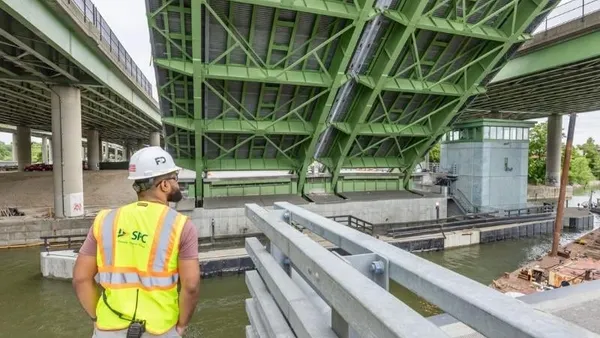UPDATE: Dec. 17, 2020: After announcing at the end of November that the P3 procurement process for the Honolulu high-speed rail project was canceled, officials this week revealed details about the two bids that made the project too expensive.
The Honolulu Authority for Rapid Transportation set the project's design and construction affordability limit at $1.7 billion with a target of almost $1.6 billion, but City Center Connection Group's bid was almost $2.8 billion, and Imua Transit Honolulu's bid was just over $2.7 billion.
For the operations and maintenance portion of the project, HART set its affordability limit at $2.6 billion with a target of approximately $2.3 billion. C3G's bid was almost $2.9 billion, and ITH's bid was almost $2.3 billion.
All in all, accepting one of these proposals would have pushed project costs approximately $1 billion over the budget.
C3G's members include Dragados, ACS Infrastructure Development and Obayashi while ITH is compromised of such infrastructure heavy-hitters as Plenary, Tutor Perini, Parsons Construction Group, Granite Construction and Traylor Brothers. In its press release, city and county officials said that they hope the companies involved in the P3 procurement will still be interested in participating in the project as alternative delivery methods are developed.
UPDATE: Oct. 9: During a special board meeting of the Honolulu Authority for Rapid Transportation (HART) Thursday, CEO Andrew Robbins said the agency will stay the course with procurement for a public-private partnership (P3) to complete the last 4 miles of its $9 billion Honolulu Rail project, despite the city's withdrawal from the partnership, Honolulu Civil Beat reported.
Robbins told those at the meeting that HART will seek legal advice from the attorneys it hired to advise it on the P3 process and try to negotiate down the amounts two bidders submitted, or at least find out why they were higher than anticipated. Honolulu Mayor Kirk Caldwell said that HART should abandon the P3 because the entire procurement was contingent on the city's involvement.
Board chairman Toby Martyn said the HART board would vote on whether or not to move forward with a P3 at a future meeting.
Dive Brief:
- Honolulu Mayor Kirk Caldwell has withdrawn the city from participation in a public-private partnership (P3) for the last 4-mile leg of the $9 billion Honolulu Rail project, Honolulu Civil Beat reported. As part of his announcement, Caldwell also said that he has notified the Federal Transit Administration (FTA), which is providing $1.5 billion for the project, of his decision.
- Caldwell did not state exactly what was behind his decision, but the city had budgeted $1.4 billion, and one bidder, Tutor Perini, reported during a recent earnings call that its proposal for completing the project was more than $2 billion and that there were only two bidders. The Honolulu Authority for Rapid Transportation (HART), which is leading the procurement, has not released any information on the bidders or their proposal amounts.
- The city was a joint partner in the procurement with HART, and it is still up to the agency to cancel the P3 procurement. HART will discuss the city's decision, as well as how the project will move forward, at a special board meeting on Oct. 8.
Dive Insight:
The price of the 20-mile commuter light rail project has increased by $4 billion since 2012 and is about seven years behind schedule. A state auditor’s report slammed HART for its mismanagement of the project. In addition, the FTA said it will not release $744 million of remaining grant money until HART contracts out and proves it can finance the last leg.
So, concerns about mismanagement and funding aside, how difficult is it for agencies like HART to switch from a P3 to a different model at this stage of procurement? It wouldn't necessarily spell disaster for the project, said attorney Mitchell Bierman, partner at Weiss Serota Helfman Cole & Bierman P.L. in Florida.
"It may not be such a big hassle," he said.
On the government side of a P3 procurement, Bierman said, there has to be a great deal of specificity in terms of what will be expected from vendors so that it will be able to properly gauge performance. If the specifications were presented to vendors in adequate detail, it could be just a matter of pulling out the unwanted elements such as design, operations or maintenance.
"As long as the specifications were well written to begin with, it may not be that difficult to pivot to a traditional owner-contractor model," he said. "At this point, their task may well be one of subtraction primarily."
It would be more difficult to exit a P3 if the project was underway, Bierman said, because the vendors typically make a big upfront capital investment and have the opportunity to amortize that investment over a long period of time.
Last year when Denver International Airport (DEN) officials fired Great Hall Partners (GHP), which had a $1.8 billion P3 contract to complete the Great Hall project and then operate and maintain it, the airport chose to ditch the P3 model and hire a construction manager instead. As part of the deal, DEN had to cover GHP's lender financing, termination fees and outstanding invoices.













